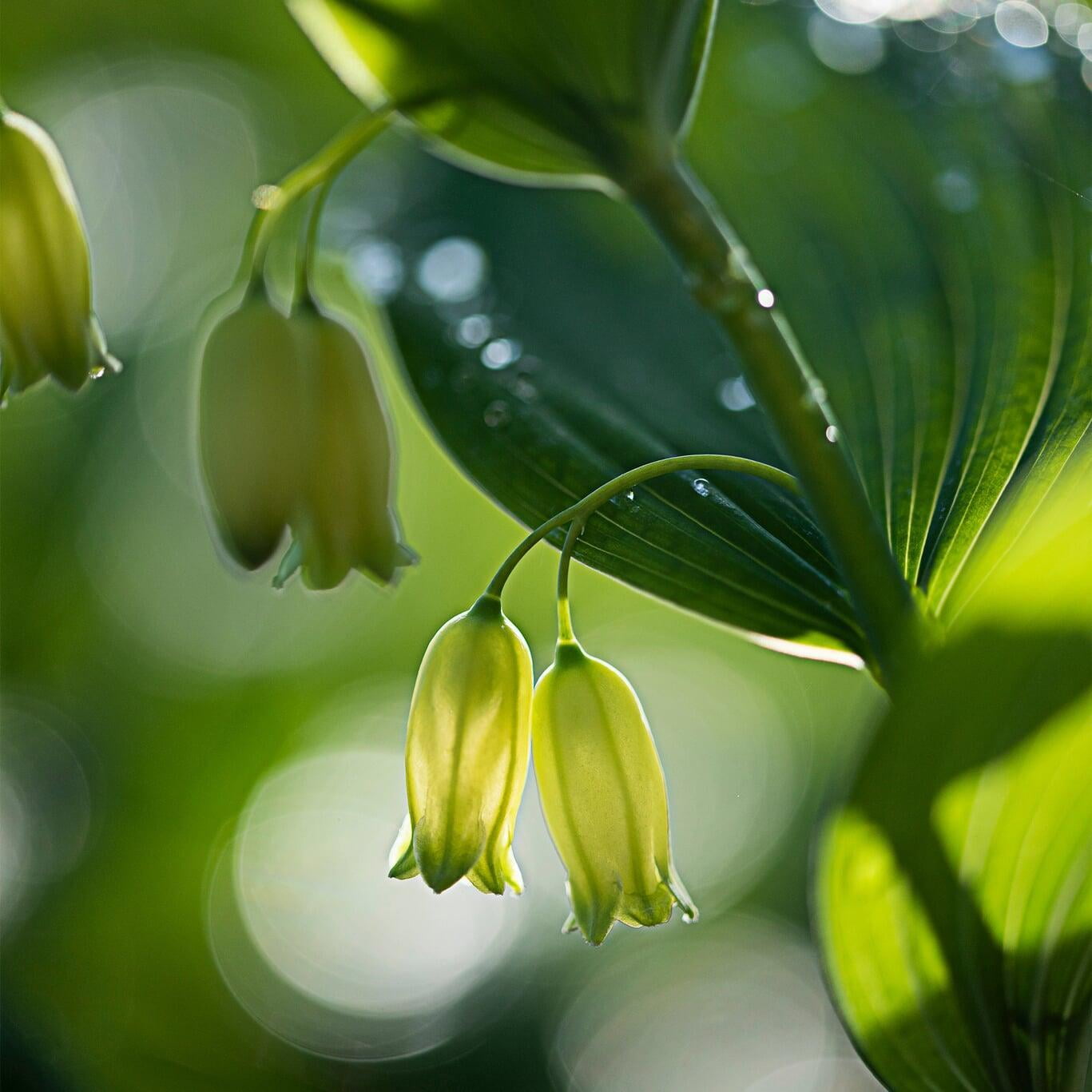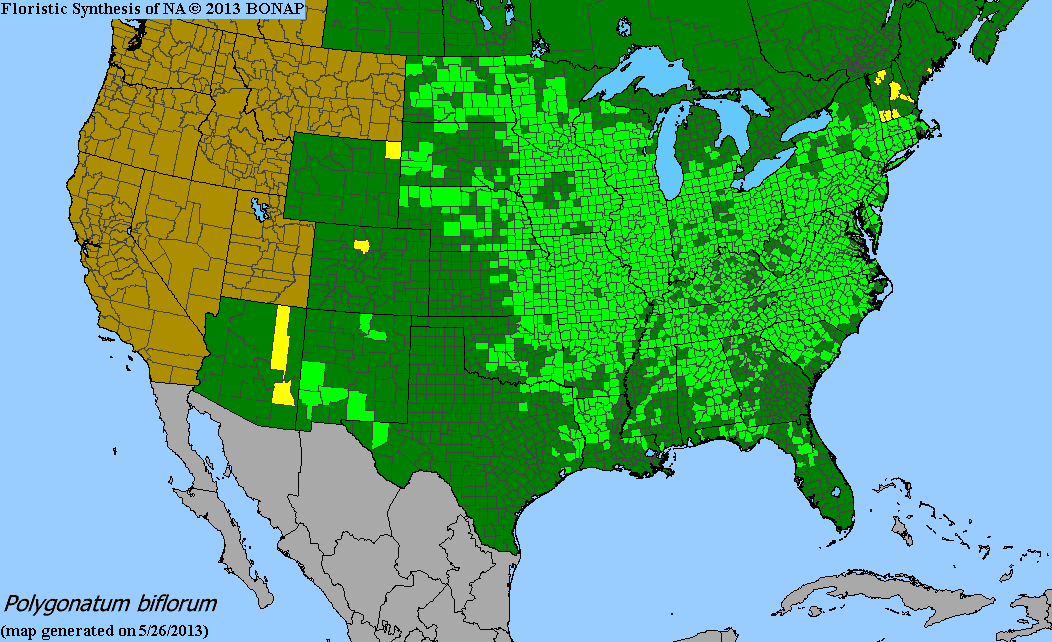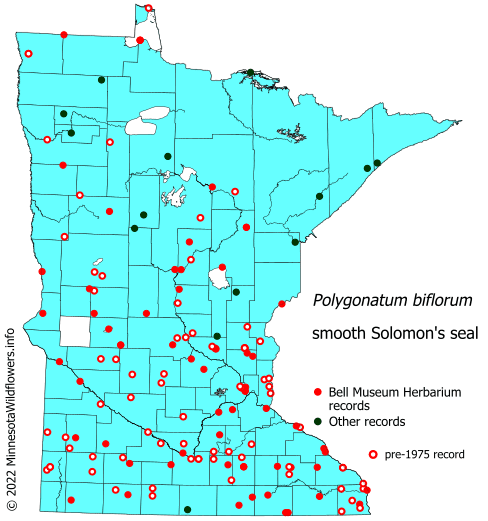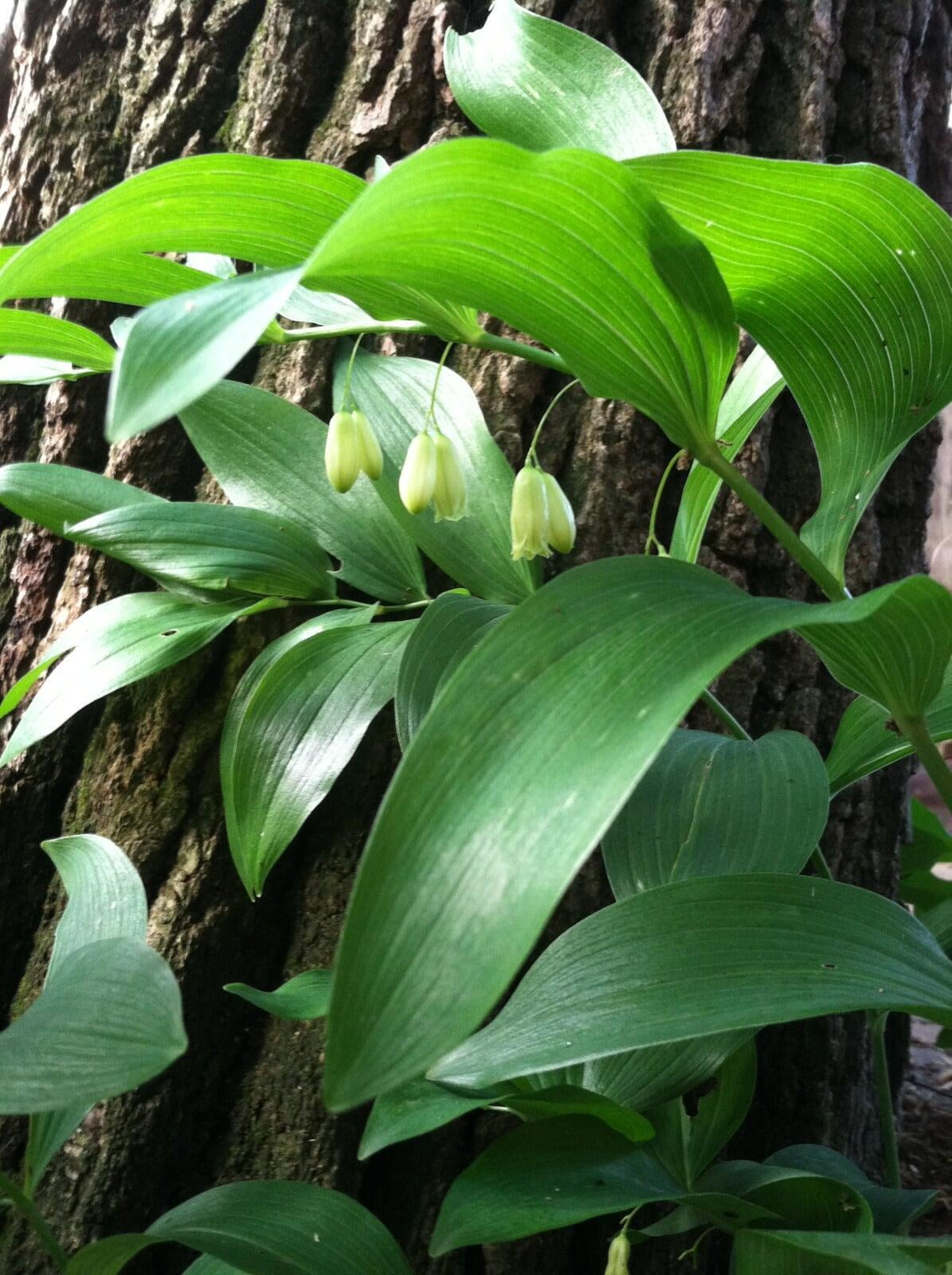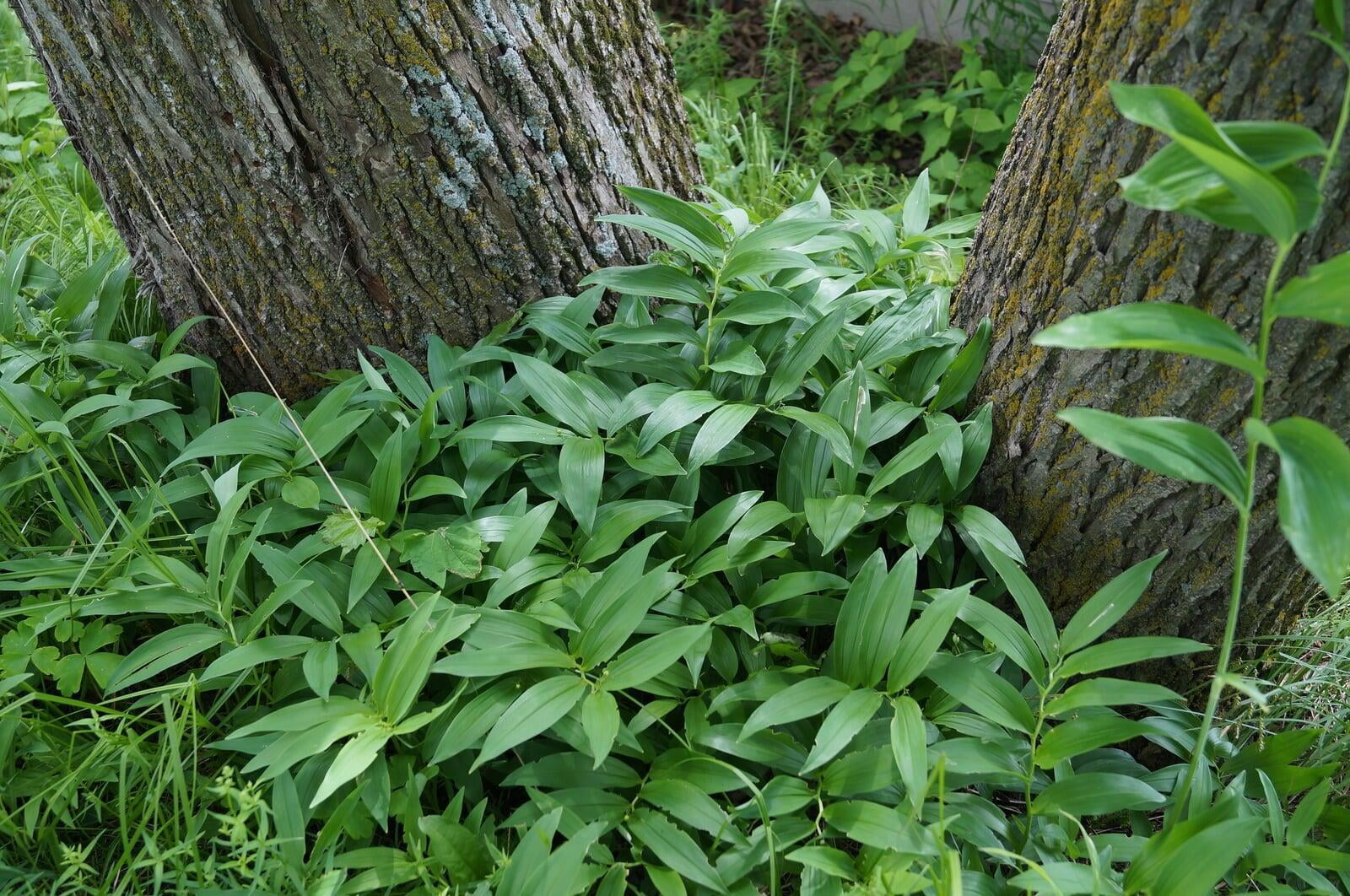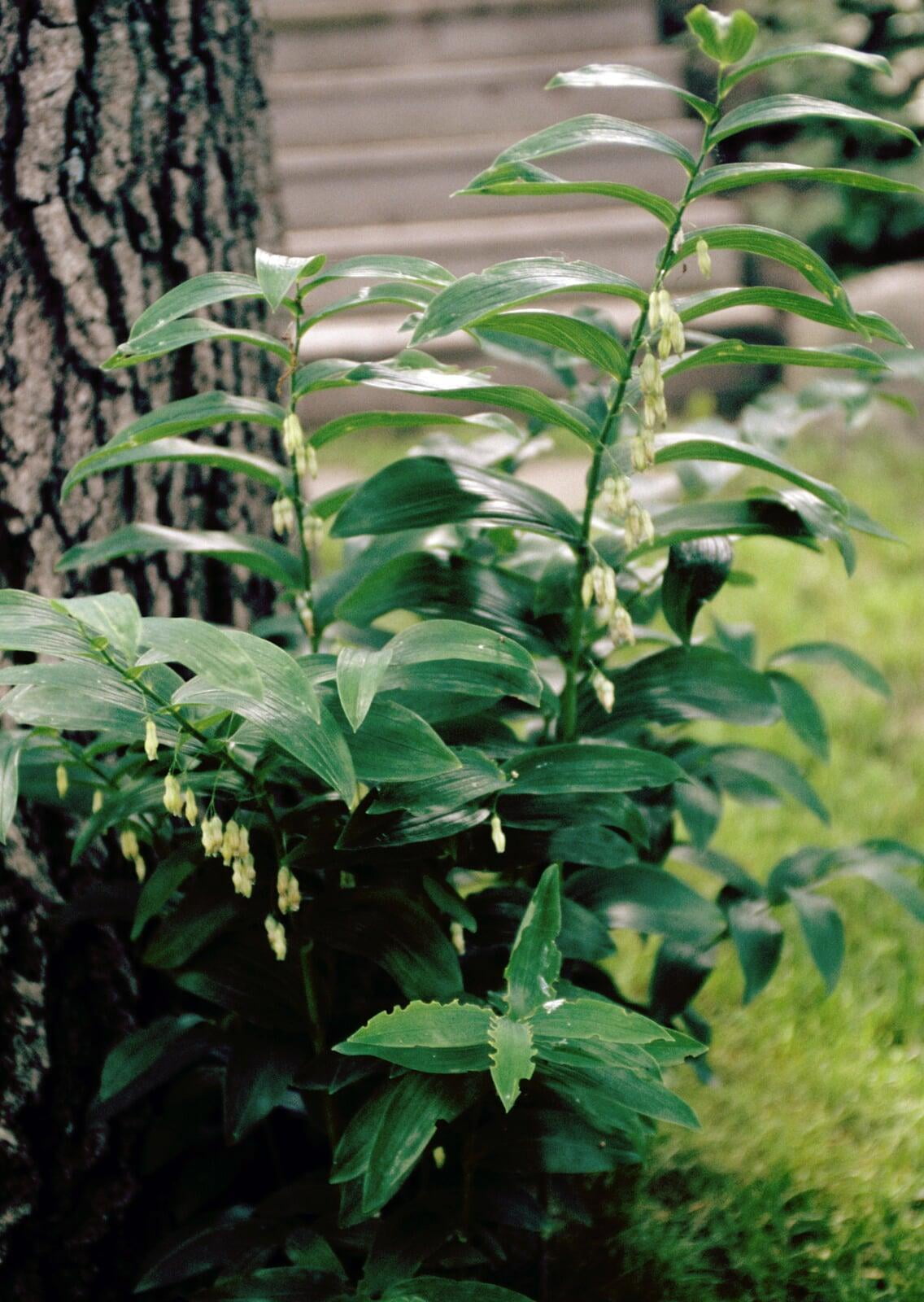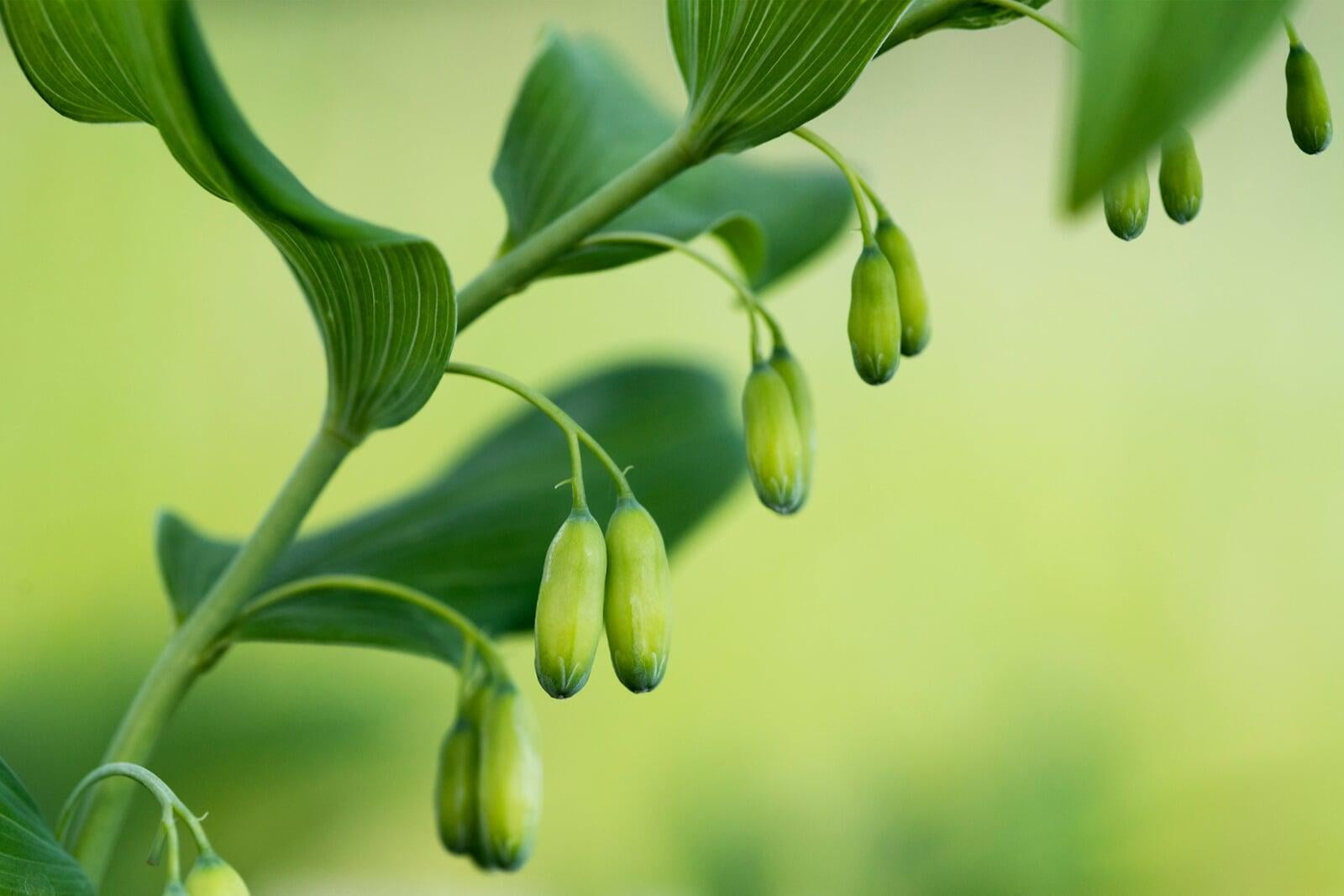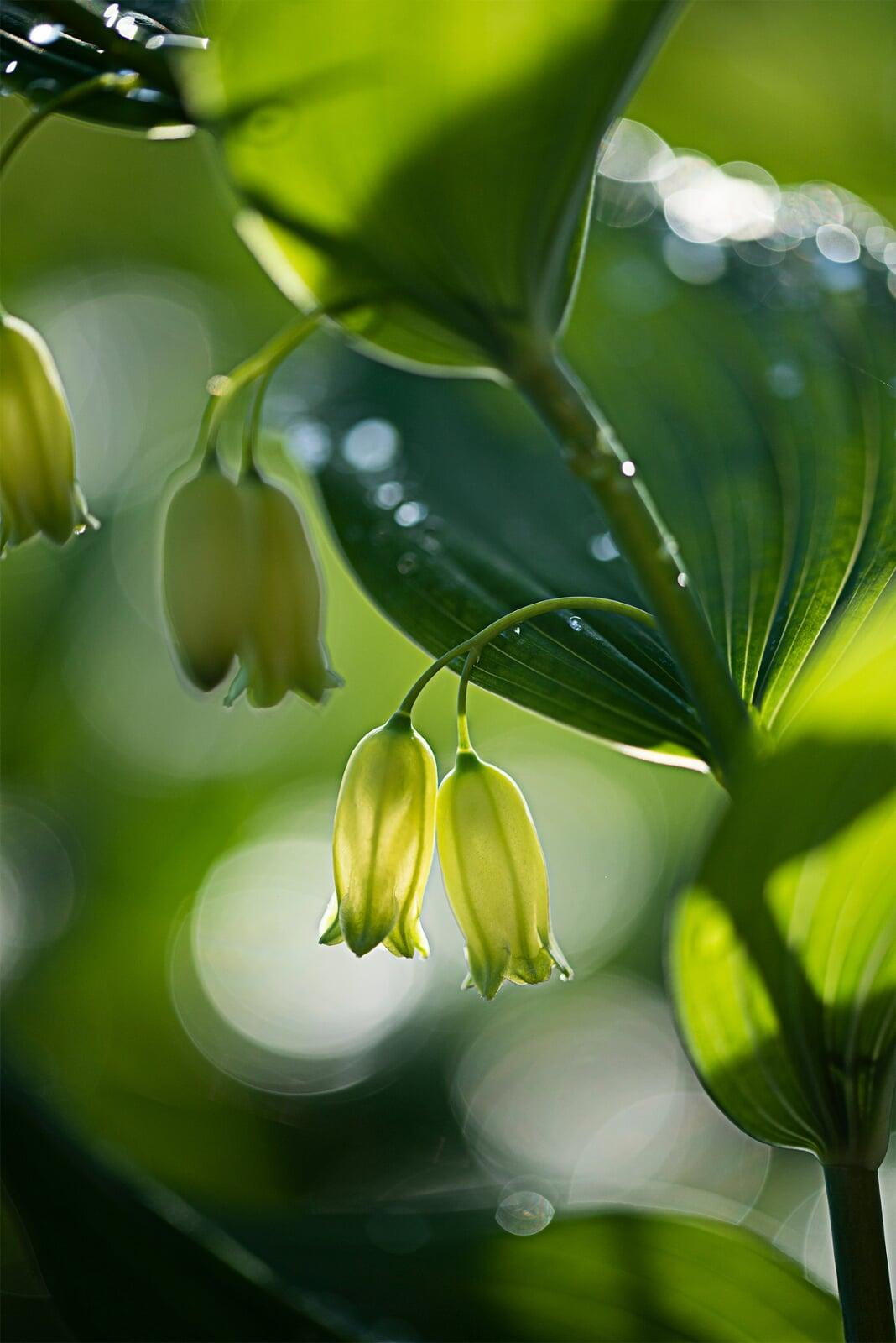Polygonatum biflorum
Solomon's seal Description:
Polygonatum biflorum, commonly known as Solomon's seal, is a herbaceous perennial plant in the family Asparagaceae. It is native to eastern North America and can be found in woodlands, thickets, and shaded slopes from Canada to the southeastern United States. The plant typically grows up to 1 to 3 feet tall and blooms in late spring with small, bell-shaped flowers that dangle beneath the arching stems. The flowers are followed by dark blue to black berries in the fall. The leaves are alternate and oval-shaped, with a distinctive curve at the base that resembles a seal impression, giving the plant its common name "Solomon's seal". Polygonatum biflorum prefers partial to full shade and moist, well-drained soil. It is an important plant for pollinators, providing nectar and pollen for bees, butterflies, and other insects.
In addition to its ornamental value, Polygonatum biflorum has a long history of medicinal and culinary use. The root of the plant is harvested for its medicinal properties, which are said to include anti-inflammatory and diuretic effects. The young shoots of the plant are also edible and can be cooked and eaten like asparagus. However, it is important to note that the plant is toxic if consumed in large quantities, and should only be used under the guidance of a qualified practitioner.
Native Range:
In Minnesota Solomon's seal is very widespread and found across the entire state. More broadly, Solomon's seal ranges from as far west as Arizona and as far east as Maine and Florida.
Standard Plant Information:
Plant Height: 1' - 3'
Bloom Time: May - July
Preferred Habitat: Does well in part shade to shade. Often found in woodlands.
Sowing:
For most homeowners, the best option is to scatter seed on the ground by hand broadcasting at a minimum of 16-64 pls ounces per acre. For even coverage, we recommend that you broadcast seed in perpendicular rows across the site to ensure even coverage.
You’ll want to broadcast any grass seed first, which will get raked into the soil lightly. Next, it is ideal to mulch the area lightly with either a clean (no seed) straw or preferably with our native Little Bluestem straw, sold at our retail garden centers. After a light mulching is complete, now it’s time to broadcast your native wildflower seeds, which should not be raked into the soil. A good rain or watering is sufficient to cover the seed.
Planting:
Simply dig a hole in the soil slightly larger than the plant’s roots. Ensure that the soil line of the plant is maintained during the transfer (i.e. the plant should be at the same level with the ground as it was in the pot). Pack any loose dirt back around the plant and make sure you water it well the same day to ensure it has the best chance of survival.

